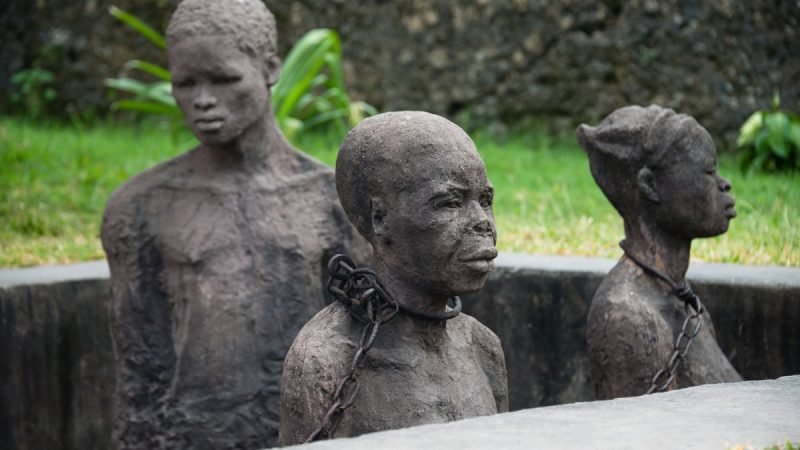House of Commons seeks Artist-in-Residence

The Speaker’s Advisory Committee on Works of Art today published an open call for applications to be the House of Commons’ Artist-in-Residence, tasked with exploring and celebrating the legacy of the 1965, 1968 and 1976 Race Relations Acts. Applications for the £25,000 role close on 12th April 2017.
To develop their understanding of how Parliament reacted to demands for racial equality, the Artist-in-Residence will travel across the United Kingdom, visiting and working collaboratively with distinct communities affected by the Acts. In particular, the residency will focus on those with direct experience of life in the UK before the Race Relations Acts, of the campaign for changes in legislation, and of championing the needs of BAME communities today.
Working together with the artist a specific artwork will be created reflecting each community’s unique experience. These artworks will be exhibited locally before being displayed in Parliament at a special exhibition in early 2019, after which they will be returned permanently to the communities that inspired them.
In addition to researching the community’s experience of the Acts through the collaborative workshops the Artist-in-Residence will explore the official records of Parliament, including the records held in the Parliamentary Archives, and meet with parliamentarians, legal experts and social historians. Upon completing the residency, the artist will be invited to present a proposal, based on their research and experiences, for an artwork for permanent display in the Houses of Parliament and inclusion in the Parliamentary Art Collection.
Alison McGovern MP, Chair of the Speaker’s Advisory Committee on Works of Art, said: “The art on the walls of the Houses of Parliament reflects the values and interests of the Victorians who commissioned it, and it tells a particular story about British history before the twentieth century. Unsurprisingly, it has long been noted that these artworks do not reflect either the modern or historic diversity of the UK’s population. The Works of Art Committee is committed to rectifying this by increasing, over time, the representation of women and ethnic minorities. We hope to demonstrate through this project that everyone has a stake and a place in Parliament by celebrating the Race Relations Acts, which were so crucial in the development of the more inclusive democracy we live in today.”
History of the Race Relations Acts
Racial tensions surrounding the arrival of new Commonwealth immigrants in the United Kingdom from the 1950s led to calls for legislation to ensure that their rights were protected. This was crystallised by the Bristol bus boycott organised by Guy Bailey, Roy Hackett and Paul Stephenson in 1963 after Bailey was refused an employment interview because he was black. The success of the boycott added to the pressure on Parliament to pass the Race Relations Act 1965, establishing the Race Relations Board. However, prosecutions proved difficult.
In 1968, the law was extended to criminalise discrimination in housing, training and education, and in the provision of goods and services. In 1976, new legislation established the Commission for Racial Equality, banned direct and indirect discrimination, and allowed for complaints to be made to industrial tribunals and courts.
The Macpherson inquiry into the murder in 1993 of black teenager Stephen Lawrence brought about legislative changes in 2000 that included public bodies and the police within the scope of the 1976 Act, with a general duty on public bodies to promote equality of opportunity and good race relations. With the Equality Act 2010, the focus has moved to a duty to promote equality rather than a prohibition against individual forms of discrimination.
Professor Iyiola Solanke, Chair of EU Law and Social Justice, University of Leeds, said: “The Race Relations Act was a bold step towards the creation of a just society in which women, children and men are judged – as so eloquently put by Martin Luther King - not by the colour of their skin but by the content of their character, and this Residency will play an important role in the ongoing effectiveness of the Act. ”
About the Residency
The commission is open to all suitably qualified UK-based practitioners working in the areas of fine art, iPad/digital art, photography, design or craft. Applications are particularly welcome from BAME practitioners who both reflect our audiences for this programme and are currently under-represented within the Parliamentary Art Collection. A fee of £25,000.00 (including VAT if applicable) will be paid for the residency. A separate commission fee, to be determined, will be paid for the creation of a permanent piece of art on the acceptance by the Speaker’s Advisory Committee on Works of Art of the practitioner’s proposal. The cost of the residency will be met from the existing Works of Art Committee budget, and the artist will be supported by Parliament’s Curatorial and Outreach teams.
For further information view: www.parliament.uk/art-rraresidency.




